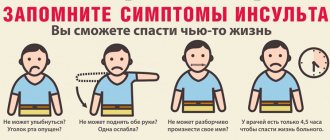Vegetovascular dystonia (VSD) is one of the few syndromes in medicine that causes a lot of disagreement among doctors. There are still no uniform criteria for diagnosis and therapy, so patients have to face many difficulties. Treatment of VSD should begin from the moment you seek medical help, and in modern realities a person has to undergo many examinations. As a result, the patient continues to experience painful symptoms of vegetative-vascular dystonia, and the doctor does not understand how to cure VSD and again sends the patient for further examination. This vicious circle can last from several months to several years.
What is VSD?
To explain the symptoms and treatment of VSD, it is necessary to have an understanding of the regulation of our body’s activities. The functioning of all internal organs is ensured by complex and multi-level relationships between the central and peripheral nervous systems.
The central cord includes the brain and spinal cord. The peripheral nervous system is represented by numerous nerve endings in organs and tissues. Some of them are under the conscious control of a person, for example, if you want to make some kind of movement, an impulse from the brain arrives to the nerve ending in the muscles. This section is called the somatic nervous system.
The other department is vegetative. It is responsible for the work of all internal organs and changes their activity, depending on environmental factors, physical activity of a person or his psycho-emotional status. This part of the nervous system works independently, that is, a person’s volitional efforts are not able to influence its activity.
The autonomic nervous system is responsible for the activity of all internal organs. Moreover, it also consists of two sections: sympathetic and parasympathetic. In their action, they have opposite effects on organs. For example, the sympathetic department increases the contractile activity of the heart, and the parasympathetic department reduces the frequency and strength of heart contractions.
In medicine, the term VSD is understood as a pathological condition when the normal relationship between two parts of the autonomic nervous system is disrupted. There is still no consensus among doctors about this syndrome.
Some clinicians do not consider VSD as a disease, but rather as a reversible pathological process based on dysfunction of the nervous system. At the same time, without timely correction, vegetative-vascular dystonia can develop into a disease of the heart, blood vessels, gastrointestinal tract or nervous system.
Many doctors agree that the syndrome is of a mental nature. All complaints with which the patient comes to the appointment are regarded as psychosomatic, that is, “arising” from mental and emotional disorders.
Despite disagreement about what it is, VSD requires complex treatment. The existing symptoms of vegetative-vascular dystonia have a pronounced negative impact on the condition of patients.
Drugs for relief of vegetative-vascular crisis
Crises with VSD most often occur at a specific time of day for each patient. During these hours, the greatest shifts in autonomic reactivity are observed. Provoking factors may be weather changes, significant physical and emotional stress. Therefore, during a mixed-type VSD crisis, antidepressants, antipsychotics and other sedatives should be available to the patient. The drugs of choice for a short period are benzodiazepines (Grandaxin, diazepam, tranxene, medazepam, alprazolam) in combination with herbal sedative drugs (Persen, novopassit).
Doctors at the Yusupov Hospital teach patients how to stop a crisis on their own. To do this, in most cases, it is enough to take 1-2 tablets of diazepam under the tongue, sometimes in combination with 20-40 mg of anaprilin and 20 drops of Corvalol or Valocordin. A crisis that can be easily controlled by taking antipsychotics can form in the patient a kind of dependence on pills, give rise to suspicions of the presence of a “serious disease” and thereby contribute to the transition of the disease to the chronic stage, increasing the cyclicity of attacks.
Taking into account the difficulties in treating patients suffering from VSD and oversaturation with medications, rehabilitation therapists use reflexology, including laser puncture and laser therapy, and other non-drug treatment methods. In order to establish the true cause of VSD, undergo a course of adequate therapy aimed at stopping attacks and preventing exacerbation of vegetative-vascular dystonia, call the Yusupov Hospital.
Causes and predisposing factors
The causes of VSD remain the subject of debate. These are due to differences in opinion about what the syndrome itself is. A number of doctors perceive vegetative-vascular dystonia as a consequence of diseases of any organs. The appearance of symptoms of vegetative-vascular dystonia is explained by secondary disturbances in nervous regulation against the background of the existing disease. For example, with cardiac manifestations of VSD, the doctor begins to look for pathology of the heart and blood vessels. Failures in finding the disease are explained by incomplete laboratory and instrumental examination of the patient.
Modern medicine is of the opinion that VSD is caused by excessive overload or disturbances in the psycho-emotional sphere. The variety of symptoms that mimic the pathology of internal organs is actually a manifestation of psychological stress. This is confirmed by laboratory and instrumental data. During the examination of the patient, no abnormalities in the internal organs are revealed.
Autonomic dystonia is part of the group of neurotic disorders (neuroses). This group of conditions is determined by the characteristics of the response to stressful situations. At the same time, in a number of patients, the symptoms of VSD (cardiac, gastrointestinal, respiratory) come to the fore and are accompanied by painful experiences.
The psychogenic nature of vegetative-vascular dystonia is also explained by the variety of mental disorders in patients with this diagnosis. Somatic (organ) manifestations are often combined with anxiety-phobic and obsessive-compulsive disorders, depression. When taking a detailed history, patients are found to have had traumatic situations in the past, signs of social maladaptation, family and interpersonal problems.
In addition to psychoemotional disorders, the following factors play a role in the development of VSD:
- hereditary and constitutional features of the autonomic nervous system;
- unfavorable course of pregnancy, childbirth and the early postpartum period;
- diseases of the central nervous system;
- characteristics of the patient’s character and personality;
- hormonal imbalance;
- excess body weight;
- infectious diseases;
- suffered acute and chronic diseases, as well as surgical interventions.
A special place in the causes of vegetative-vascular dystonia is given to lifestyle disorders. Predisposing factors may include a sedentary lifestyle, disturbances in sleep-wake cycles, bad habits, monotonous work, mental and physical stress.
Complications
NCD is not an independent disease, but it can cause the development of dangerous conditions. In severe dystonia and lack of adequate therapy, it can cause:
- myocardial infarction;
- ischemic or hemorrhagic stroke;
- cholelithiasis and urolithiasis;
- diabetes mellitus;
- arterial hypertension that does not respond to classical treatment regimens.
Malfunctions of the ANS also affect the immune system. Resistance to infections with this pathology is significantly reduced.
Kinds
There is still no unified classification of vegetative-vascular dystonia that would take into account the diversity of its manifestations. In medical practice, VSD is most often divided into several types:
- vagotonic – the clinical picture is due to the predominance of the parasympathetic department over the sympathetic one (low blood pressure, chills, dizziness, lightheadedness, “lump in the throat” and others);
- sympathicotonic - symptoms are associated with hyperfunction of the sympathetic department (increased blood pressure, rapid heartbeat, feeling of heat);
- mixed - both types of symptoms may be present in the clinical picture.
Depending on the mechanism of development, the syndrome is divided into two types: primary and secondary. The primary form of VSD occurs independently, the secondary form occurs against the background of existing diseases of various localizations.
Vegetative-vascular dystonia is also divided into subtypes depending on organ symptoms. Here are several clinical variants of VSD:
- changes in the cardiovascular system;
- disruption of the gastrointestinal tract;
- psychoemotional and nervous disorders;
- changes in the functioning of the respiratory system.
The most common VSD involves the cardiovascular system. This type of syndrome has its own name - neurocirculatory dystonia. It is divided into several clinical subtypes.
| Hypertensive | Hypotonic | Cardiac |
| Characterized by increases in systolic blood pressure, palpitations and interruptions in heart function. Combined with other manifestations of sympathicotonia (for example, hot flashes, sweating). | It is characterized by lowering blood pressure and slowing heart rate. Other symptoms include signs of vagotonia (dizziness, fainting, and others). | The main complaint is pain in the heart area of varying nature and severity. Most often, the pain is stabbing and occurs against the background of emotional stress. |
Any of the listed variants of vegetative-vascular dystonia can be of three degrees of severity: mild, moderate or severe. The severity of the condition is assessed based on the client’s complaints and the severity of clinical manifestations.
The course of VSD can be permanent (constant) or paroxysmal (paroxysmal). The first variant of the syndrome is spoken of in cases where the symptoms bother you almost every day and are mild or moderate. A vegetative-vascular attack begins suddenly against the background of the patient’s relative health and is accompanied by a significant deterioration in the general condition. As a rule, an attack is provoked by overwork or psycho-emotional stress.
Clinical manifestations
The whole variety of symptoms of autonomic dysfunction can be divided into several groups. In this case, the organ localization of manifestations of vegetative-vascular dystonia is taken into account.
Cardiovascular manifestations
Cardiovascular symptoms in adults and children are very common with VSD. The main ones are cardialgia (pain in the heart) and various rhythm disturbances. Most often, heart pain appears suddenly against the background of previous emotional stress, less often they are observed at rest. They have a stabbing character. Patients themselves usually describe the pain syndrome with the phrase “stabbing like needles,” pointing to the area of the heart.
The duration of pain varies. For some it is a single tingling sensation, for others it is a long-term discomfort. The pain can also radiate to the shoulder girdle, left arm or shoulder blade, and less commonly to the right half of the body. Such symptoms sometimes cause suspicion among doctors due to the similarity of clinical manifestations with coronary heart disease, in particular with angina pectoris.
Rhythm disturbances are represented by its slowdown or acceleration (brady- and tachycardia). Bradycardia is usually not felt by the patient and is detected during examination. An increased heart rate may be perceived as palpitations. Less common are extrasystoles, which are felt as a “fading” of the heart.
This group of symptoms also includes an increase or decrease in blood pressure (hypertensive and hypotonic type of syndrome). The vascular manifestations of VSD are diverse. They are mainly represented by chilliness and freezing, coldness of the extremities, and pallor of the skin.
The most pronounced cardiovascular signs of vegetative-vascular dystonia are in patients suffering from paroxysms. During an attack, the symptoms sharply worsen, and in addition to them, uncontrollable fear, a feeling of lack of air, and others appear.
Gastrointestinal manifestations
Symptoms of VSD from the digestive organs are varied. They can be combined into two large groups: dyspepsia and irritable bowel syndrome. In the first case, the patient's complaints are presented as follows:
- pain in the projection of the stomach or esophagus of varying intensity, not having a clear relationship with food intake;
- belching air;
- feeling of fullness in the stomach, distension;
- flatulence;
- nausea;
- unpleasant taste in the mouth, often metallic or bitter;
- tendency to diarrhea or constipation.
Such symptoms are similar to manifestations of a peptic ulcer, but when examining the patient, no signs are found. The listed complaints bother patients for a long time, and drug therapy does not provide a lasting effect. Disorders of the gastrointestinal tract often cause a decrease in appetite and body weight.
Another type of disorder with autonomic dystonia is irritable bowel syndrome. Its main manifestations are stool upset and widespread abdominal pain. At the same time, the patient’s appetite does not suffer, and body weight remains the same. Painful sensations can be long-lasting and aching, or acute, paroxysmal (like spasms). Stool disorders are represented by diarrhea (defecation three times a day or more often) or constipation (stool less than three times a week).
Respiratory symptoms
The main respiratory symptoms of VSD are represented by neurogenic respiratory disorders. The respiratory system, although considered autonomous, is still closely connected with the emotional state. Anxiety and low mood play a special role here.
Under the influence of a psychogenic factor, the rhythm of normal breathing is disrupted. It becomes faster and deeper. As a result, hyperventilation develops, which can lead to biochemical changes. A patient with respiratory disorders experiences hypocapnia (lack of CO2 in the blood) and respiratory alkalosis (alkalization of the blood). These shifts can lead to pain and other sensory disturbances, which again triggers breathing failure.
Respiratory disorders may include the following:
- labored breathing;
- feeling of lack of air;
- violation of the frequency and depth of breathing;
- equivalents of hyperventilation (frequent sighs, coughing, yawning).
Respiratory symptoms of VSD are sometimes referred to as “empty breath.” The patient's main complaints are dissatisfaction with inhalation and a feeling of lack of air. The constant feeling of lack of air is manifested not only by deep breaths. Patients do not tolerate hot weather and prolonged stay indoors.
Respiratory disorders are more pronounced in crowded places or during stressful situations. In the paroxysmal form of VSD, respiratory disorders are of the nature of a hyperventilation crisis and are expressed to a significant extent.
Nervous and psychoemotional disorders
This group of symptoms is regarded by most doctors as the main one. Mental and emotional disorders in VSD are most pronounced. They can be represented as follows:
- increased anxiety and constant nervousness;
- lability (swings) of mood, a tendency to decrease;
- various types of phobias (fears), especially social ones;
- panic disorders;
- sleep disorders;
- obsessive thoughts and actions (constant hand washing, checking things);
- non-acceptance of oneself;
- loss of interests and desire to do anything;
- inability to enjoy or take pleasure in anything.
Neurological symptoms also include fainting. They are more often observed in adolescents and young adults. The mechanism of their development is associated with a short-term decrease in cerebral circulation. Fainting can last from a few seconds to several minutes. It is not accompanied by convulsions, and after fainting there may be general weakness and a feeling of weakness.
In most patients, true neurological disorders (primary headaches, neurogenic fainting) or mental illnesses are hidden under the “mask” of VSD. The fact is that the diagnosis of VSD is only a statement of the fact that the patient has some somatic symptoms. The root cause of these complaints remains unknown to general practitioners.
Somatic manifestations of VSD in psychiatry are almost always considered as a consequence of mental disorders, especially the anxiety spectrum. The range of mental disorders that have symptoms of vegetative-vascular dystonia includes depression, anxiety-phobic disorders, mania and neurotic-type syndromes.
Other symptoms
VSD can also manifest itself as thermoregulation disorders. A number of patients may experience a rise in temperature due to emotional stress, more often in the morning. This may be accompanied by a feeling of heat and profuse sweating. Temperature rises are more often observed in the autumn-winter period.
With the vagotonic type of VSD, patients blush easily in stressful situations. The skin has a cyanotic (blue) color, moist and cold. Upon closer examination, a vascular pattern is revealed, giving the skin a marbling appearance.
Vagotonia is also characterized by excessive greasiness of the skin and a tendency to acne. Sympathicotonia, on the contrary, is characterized by dry skin and a tendency to peel. Sweating in patients is scanty.
Advantages of the clinic
The Health Energy Clinic uses an integrated approach to solving any patient’s medical problems. We offer the most complete range of services, including:
- consultations with narrow specialists, including obtaining the opinion of a foreign doctor remotely;
- all types of tests and diagnostic procedures;
- modern treatment regimens compiled on an individual basis;
- issuance of certificates and conclusions.
A healthy person can choose one of the comprehensive check-up diagnostic programs to identify hidden pathologies.
Neurocirculatory dystonia is a disease that is not recognized by all doctors, but its symptoms do not disappear. Don’t let disruptions in the nervous system ruin your life, sign up for diagnostics and treatment at the Energy of Health neurology clinic.
Sudden vegetative-vascular attack
The so-called “vegetative-vascular crises”, which in practice occur like panic attacks, deserve special attention. The sudden onset of feelings of fear and anxiety is accompanied by severe somatic symptoms (palpitations, inability to breathe). They are extremely difficult for patients to tolerate and lead to complete social maladjustment. Moreover, a person is constantly in painful anticipation of a second attack.
In some patients, the attack appears suddenly. Others note a clear relationship with potentially threatening or stressful situations. This could be being in society, a cramped room or space, exciting news, etc.
In addition to severe anxiety and fear, the patient experiences palpitations, a lump in the throat, a feeling of lack of air and the inability to breathe. Choking, dizziness, increased heart rate, as well as disorientation in space and time lead to a feeling of fear of death. A panic attack often causes an ambulance to be called.
Prevention
Prevention of NCD is important not only for healthy people who are at risk, but also for those who are already closely confronted with this pathology. Changing your lifestyle, adjusting your diet and physical activity help strengthen the body and significantly reduce the risk of unpleasant symptoms. Doctors recommend adhering to the following rules:
- eliminate overtime, ensure daily proper rest;
- create the most peaceful atmosphere at home and at work;
- go to bed on time (duration of sleep at night is 8 hours or more);
- do not ignore walks in the fresh air;
- choose a suitable sport that will allow you to practice for your pleasure (swimming, walking, cycling, yoga, Pilates, etc.);
- adjust nutrition: the daily diet must meet the standards for caloric content, the ratio of dietary fat, the content of vitamins and microelements;
- minimize the consumption of food stimulants: tea, coffee, fatty foods, smoked foods, alcoholic drinks;
- drink at least 2 liters of clean water daily (other drinks do not count).
Compliance with these rules is useful for the prevention of not only neurocirculatory dystonia, but also many other diseases. The body always responds gratefully to care for it and begins to cope much better with inevitable stress and physical activity.
Diagnostics
The diagnostic program for suspected VSD is to exclude pathology of internal organs, the cervical spine, as well as impaired blood supply to the brain. The scope of the diagnostic program is determined by the attending physician based on the patient’s complaints. As a rule, a simple laboratory and instrumental examination is sufficient. For example, in case of cardiac complaints, an ECG, ultrasound of the heart, daily monitoring of pressure and heart rhythm, and stress tests are performed. For complaints of dizziness and darkening of the eyes, a duplex of the vessels of the head and neck, or an MRI of the brain in vascular mode. In many cases, a consultation with a psychotherapist is recommended, especially if no violations of the internal organs or the central or peripheral nervous system are detected.
Osteopathic diagnosis plays an important role. It allows you to identify those disorders that are “not visible” during instrumental examination. Often, the patient is referred to a psychotherapist, while the cause is quite “tangible” and can be perfectly treated with osteopathy. Diagnostics is based on the fine sensitivity of the hands of an osteopath and allows you to identify those areas of the body in which tissues are “tight,” move poorly, or affect other areas of the body, disrupting their normal function.
For example, with symptoms such as:
- dizziness, weakness;
- panic attacks;
- difficulty breathing;
- chest pain;
- chronic pain;
- heartbeat;
- high blood pressure;
- arterial hypotension;
- stomach ache.
Treatment at the Energy of Health clinic
Doctors at the Energy of Health clinic do not downplay the significance of the symptoms of NCD. We guarantee each patient a thorough examination, including all the necessary samples and tests, as well as selection of the most gentle, but at the same time effective treatment. At your service:
- drawing up a medication correction regimen in accordance with the characteristics of the course of the disease (not only the complex of symptoms, form and stage of the disease are taken into account, but also the emotional background, chronic diseases, hormonal status, characteristics of the patient’s work, etc.);
- restorative procedures: physiotherapy, massage;
- selection of physical exercises to perform in the gym with an instructor and at home;
- acupuncture;
- help from a psychotherapist and psychiatrist;
- selection of a resort for treatment in a sanatorium, collection of necessary documents;
- detailed recommendations for correcting lifestyle, nutrition, and physical activity.
We will help keep the disease under control and will always come to the rescue in case of exacerbation.









